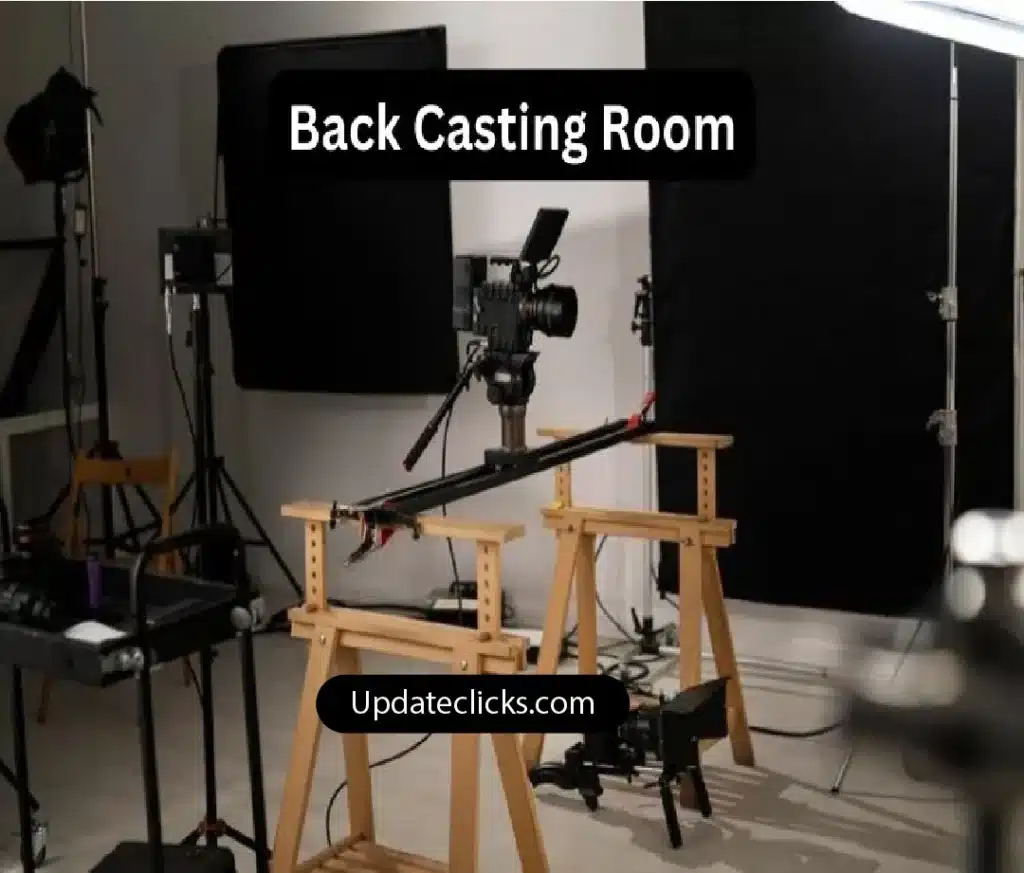
In the dynamic landscape of Back Casting Room, businesses are constantly seeking innovative methods to forecast future scenarios accurately. One such method gaining prominence is back casting, a technique that starts with a desired future outcome and works backward to identify the steps needed to reach that goal. Moreover, In this article, we delve into the concept of back casting room, its significance, design, operation, benefits, challenges, and future prospects.
Introduction to Back Casting
What is Back Casting?
Back casting is a strategic planning approach that contrasts with traditional forecasting methods. Instead of extrapolating future trends from historical data, Although back casting begins with a vision of the desired future state and then maps out the necessary actions to achieve that vision.
Importance of Back Casting in Planning
Back casting offers several advantages over traditional forecasting. By focusing on desired outcomes, organizations can align their strategies more effectively with long-term goals. However, It encourages creative thinking and allows for the identification of potential obstacles before they arise.
Role of Back Casting Room
The back casting room serves as a dedicated space where stakeholders engage in the back casting process. Although, It provides the infrastructure and resources necessary for collaborative planning, data analysis, and decision-making.
Design and Structure of Back Casting Room
Setting Up the Back Casting Room
Establishing a back casting room requires careful consideration of physical space, technology infrastructure, and accessibility to key stakeholders. Ideally, However, it should be designed to facilitate brainstorming sessions, data analysis, and strategy discussions.
Components of a Back Casting Room
A typical back casting room may include amenities such as whiteboards, projectors, video conferencing facilities, and data visualization tools. Although, Comfortable seating arrangements and conducive ambiance are essential to foster creativity and productivity.
Technology Integration in Back Casting Rooms
Modern back casting rooms leverage technology to streamline the planning process. Moreover, From data analytics software to simulation tools, integrating cutting-edge technology enhances the accuracy and efficiency of back casting exercises.
How Back Casting Room Works
Gathering Historical Data
The first step in back casting involves gathering historical data relevant to the desired future outcome. However, This may include market trends, consumer behavior patterns, economic indicators, and industry benchmarks.
Scenario Analysis and Modeling
Once historical data is collected, stakeholders engage in scenario analysis and modeling. Although, By simulating various scenarios and their potential impacts, decision-makers can identify the most viable pathways to achieving the desired future state.
Decision Making and Strategy Formulation
Based on the insights gained from scenario analysis, stakeholders collaboratively formulate strategies and action plans. This iterative process involves evaluating trade-offs, However, prioritizing initiatives, and refining strategies to optimize outcomes.
Benefits of Using Back Casting Room
Improved Decision Making
Back casting empowers organizations to make informed decisions based on a holistic understanding of future possibilities. By considering multiple scenarios and their implications, Moreover, decision-makers can mitigate risks and capitalize on opportunities more effectively.
Risk Mitigation
Anticipating potential challenges and uncertainties is inherent in the back casting approach. By identifying risks early in the planning process, Although, organizations can implement proactive measures to minimize their impact and ensure resilience.
Long-Term Planning
Back casting encourages a long-term perspective by emphasizing the alignment of short-term actions with overarching strategic objectives. However, By envisioning the desired future state and working backward, organizations can avoid short-sighted decisions and pursue sustainable growth.
Challenges and Limitations
Data Accuracy and Availability
One of the primary challenges in back casting is the availability and reliability of historical data. Inaccurate or incomplete data can lead to flawed assumptions and unreliable forecasts, Although, undermining the effectiveness of the planning process.
Complexity in Scenario Building
Creating realistic and comprehensive scenarios requires expertise in various domains, including economics, technology, and geopolitics. Moreover, Balancing complexity with simplicity is crucial to ensure that scenarios are meaningful and actionable.
Integration with Existing Systems
Integrating back casting into existing planning frameworks and organizational processes can be challenging. Resistance to change, siloed decision-making structures, Although and cultural barriers may impede the adoption of back casting practices.
Case Studies and Examples
Industry Applications
Numerous industries, including healthcare, finance, energy, and transportation, have embraced back casting as a strategic planning tool. In addiction, Case studies from companies such as Shell, Intel, and Philips demonstrate the effectiveness of back casting in driving innovation and resilience.
Success Stories
Organizations that have successfully implemented back casting have achieved remarkable results. From anticipating market disruptions to identifying new growth opportunities, Moreover, the stories of success highlight the transformative potential of back casting.
Future Trends in Back Casting Room Technology
Advancements in Predictive Analytics
The evolution of predictive analytics is poised to enhance the capabilities of back casting rooms. Moreover, Machine learning algorithms, big data analytics, and predictive modeling techniques enable more accurate forecasting and scenario analysis.
AI and Machine Learning Integration
Artificial intelligence (AI) and machine learning (ML) technologies are increasingly being integrated into back casting processes. AI-driven insights, automated scenario generation, and predictive algorithms empower organizations to make data-driven decisions with greater confidence.
Enhanced Visualization Tools
The proliferation of advanced visualization tools revolutionizes how stakeholders interact with back casting data. From immersive virtual reality simulations to interactive dashboards, Although, visualization tools facilitate deeper insights and more engaging collaboration.
Conclusion
In conclusion, the back casting room emerges as a vital resource for organizations navigating an uncertain future. By embracing a forward-thinking approach and leveraging advanced technologies, businesses can chart a course toward their desired future state with confidence and clarity. Moreover, The collaborative nature of back casting fosters innovation, resilience, and strategic agility, positioning organizations for sustainable success in a rapidly evolving landscape.